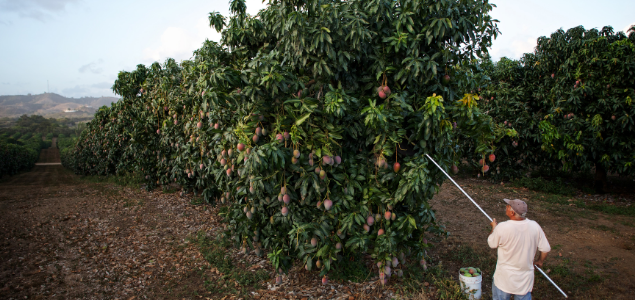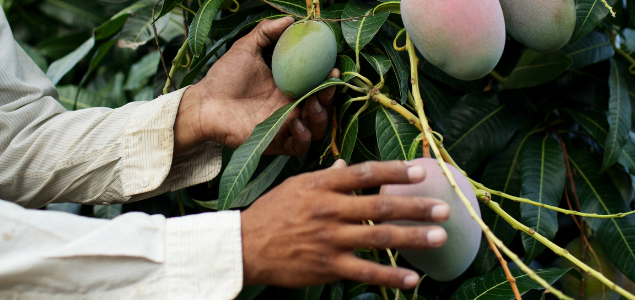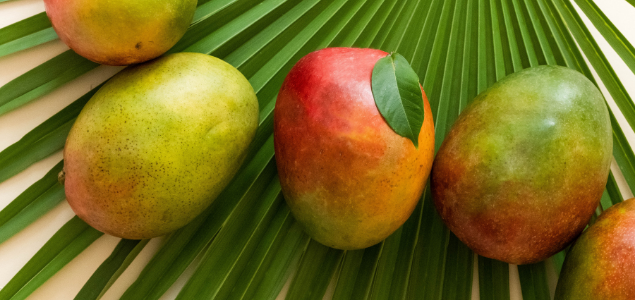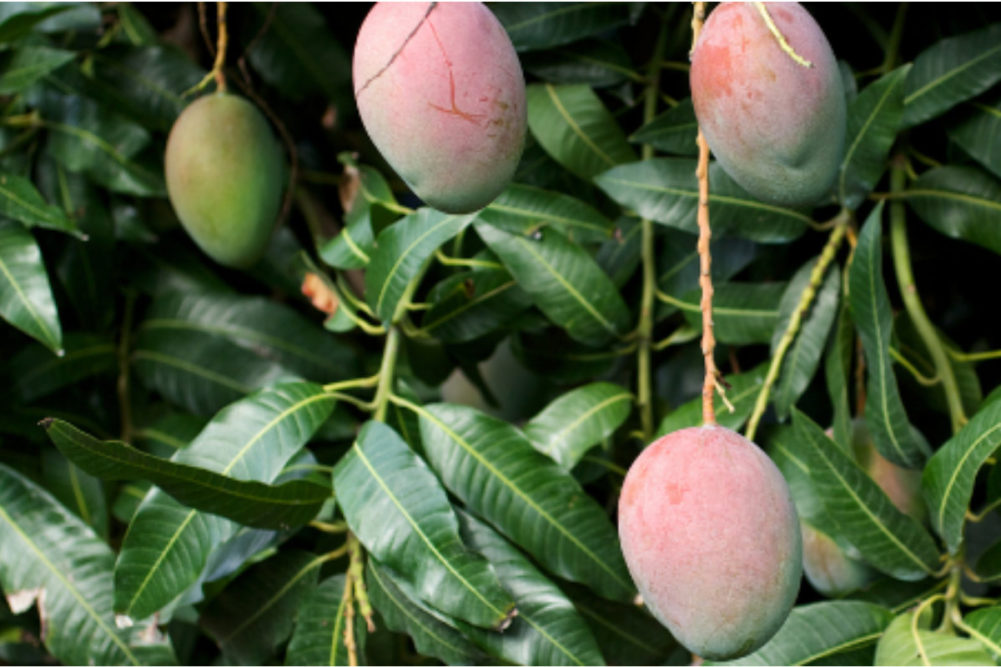From 2005 to 2020, mango consumption in the United States has increased 93 percent from 1.88 pounds per person to 3.63 pounds per person. As the fruit’s popularity has grown, so has its availability. Off-shore is no longer off-season for mangos. Gone are the days when mangos were considered seasonal. Consumers expect, and purchase, mangos year-round and they deserve a quality, consistent experience each time. The good news is the mango industry has responded.
Starting the first week of August and extending through March, Brazil, Ecuador, and Peru supply the United States primarily with Tommy Atkins and Kent mangos. During the 2020-2021 season, more than 30 percent of mango imports into the United States came from this region. The end of the year going into the new year is a great opportunity to highlight these mangos.
Each  variety showcases the versatility of mango, especially during the winter months. The National Mango Board (NMB) continues to highlight how mangos can be incorporated in dishes from traditional holiday recipes and beyond.
variety showcases the versatility of mango, especially during the winter months. The National Mango Board (NMB) continues to highlight how mangos can be incorporated in dishes from traditional holiday recipes and beyond.
Beginning in early September, the Mexican mango season makes way for the first offshore mangos. Brazilian Tommy Atkins mangos are the perfect segue into fall. Their bright external color coupled with their orangish internal color mirror the colors of fall, providing a seamless transition for mangos into fall activities and seasonal recipes. No football game would be complete without some mango salsa to highlight tailgating fun. Or hold onto the last vestiges of summer by incorporating grilled mango into menu planning. Mangos’ versatility makes for countless possibilities beyond enjoying this delicious fruit on its own.
As fall makes way for winter, Ecuadorian mangos continue to inspire and offer a special treat for the holidays. Vibrant mango displays adjacent to the citrus set highlight mangos’ versatility as a festive ingredient to holiday recipes. Whether its holiday drinks or appetizers, Ecuadorian mangos bring a new flair to the party. Cutting mangos as spears to adorn a cocktail or mocktail can signal in the holiday cheer. Or, adding mangos to traditional dishes for a burst of new flavor profiles and new traditions is a great way to bring out the best for family and friends.
Then, start the new year on the right foot with Peruvian Kent mangos. The Peruvian Kent  variety of mangos has become a much anticipated and sought-after commodity. Kent mangos boast a smooth, mellow flavor and are a source of 20+ vitamins and minerals, including Vitamin C. Touting the benefits of this superfruit while incorporating wholesome recipes into meal planning like smoothies, salads, and other snacks and entrees. Also, highlighting mangos in New Year’s ads and promotions can jumpstart sales and profits.
variety of mangos has become a much anticipated and sought-after commodity. Kent mangos boast a smooth, mellow flavor and are a source of 20+ vitamins and minerals, including Vitamin C. Touting the benefits of this superfruit while incorporating wholesome recipes into meal planning like smoothies, salads, and other snacks and entrees. Also, highlighting mangos in New Year’s ads and promotions can jumpstart sales and profits.
Consumers have demonstrated that mangos are a mainstay item in the United States. Off-shore mango varieties and their distinct attributes contribute mightily to increases in mango consumption with U.S. consumers. Showcasing the year-round availability and versatility of mango is essential for continued growth within the category. In addition, transitioning away from positioning mangos as exotic, but as a mainstream fruit, and innovative mango-themed displays and promotions will keep customers coming back for more. And more sales, mean more profits, and more satisfied mango fans.

The NMB also advocates for including mango conditioning programs into your retail program. Mangos from offshore-producing countries into the United States propose a unique opportunity for the mango supply chain. Creating a consistent experience is of the utmost importance for the U.S. mango consumer. By incorporating forced air ripening, coupled with ethylene, a consistent mango flavor and experience can be better managed, thus providing the mango consumer with the most authentic taste possible.
For any questions about mangos, please contact the NMB.


